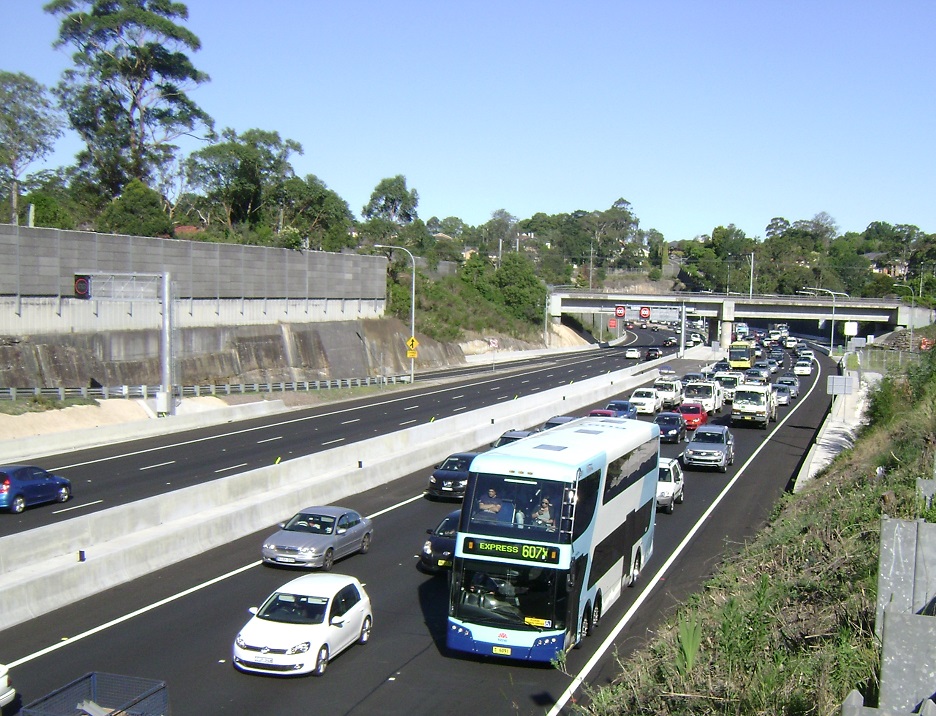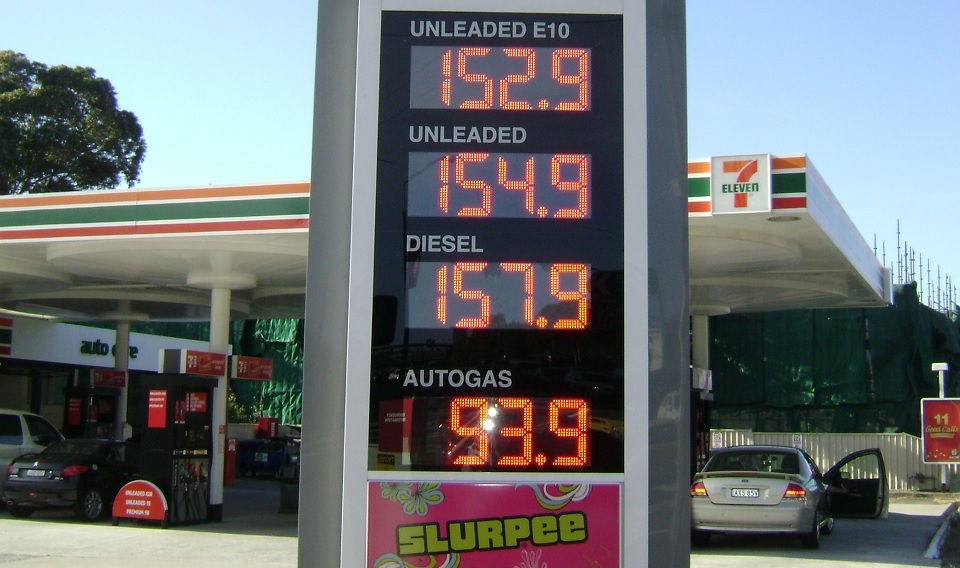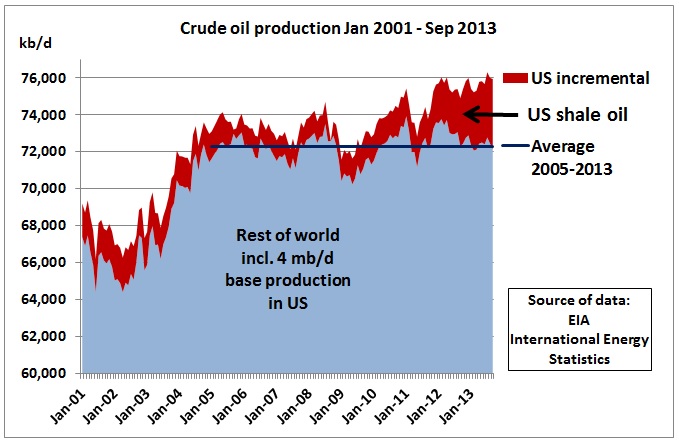Latest figures for the 4th quarter of 2013 show that for a 7.5% increase of traffic over 3 years after an additional 3rd lane was opened, the cost to motorists has jumped by 31.7 %
13 Jan 2014
Transurban said the result [revenue boost] was underpinned by strong patronage on the group’s Sydney network, reflecting improved travel times following the completion of the M2 upgrade in August. http://news.smh.com.au/breaking-news-business/sydney-roads-boost-transurban-revenue-20140113-30pec.html
Improved travel times?
Pre-Xmas rush hr traffic on 18 Dec 2013, westbound on the M2. Note the mono-directional traffic flows reflecting Sydney’s imbalanced and therefore costly city structure.
The bus is stuck in the jam although the widening EIS promised improvement for public transport. Bus lanes have been shortened and a vital bus ramp removed.
The skyrocketing marginal expenditure for commuting demonstrates how inefficient Sydney has become as it has long ago passed its economic limits to growth. 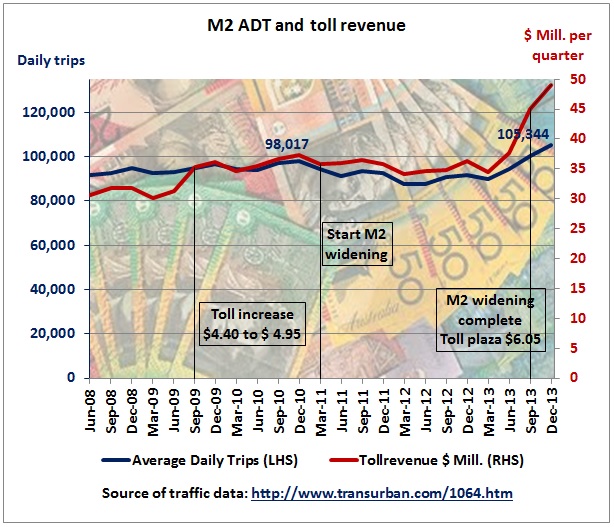 Traffic data for 4Q 2013 are here: http://news.iguana2.com/transurban/ASX/TCL/400863
Traffic data for 4Q 2013 are here: http://news.iguana2.com/transurban/ASX/TCL/400863 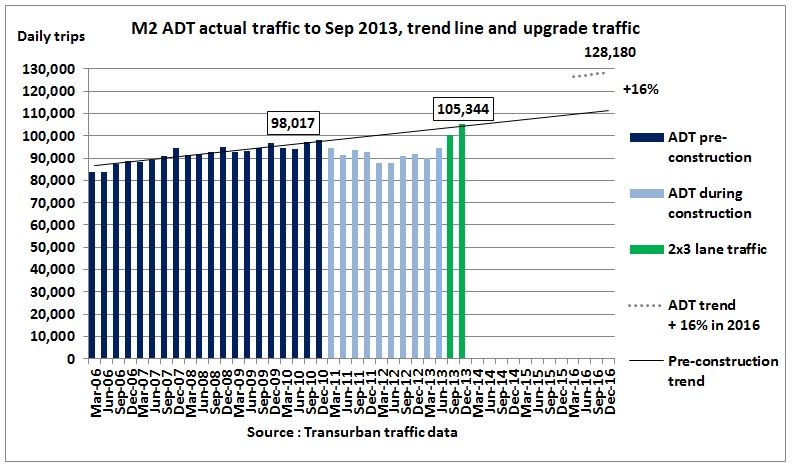 4Q traffic is now back to a linear pre-widening trend of 2.6% pa. But Transurban planned for another, additional 16% above that trend by end 2016
4Q traffic is now back to a linear pre-widening trend of 2.6% pa. But Transurban planned for another, additional 16% above that trend by end 2016 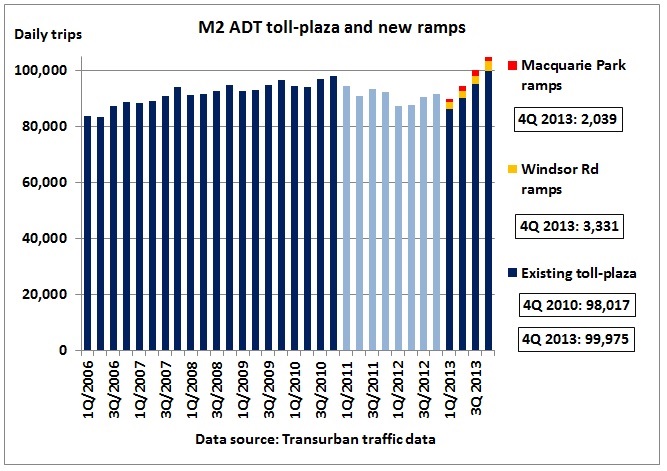
73% of additional traffic since 4Q 2010 comes from new ramps. Traffic through the main toll plaza increased by 2% over 3 years.
Sydney’s population grew by 1.6% pa between 2007 and 2012 http://www.abs.gov.au/ausstats/abs@.nsf/Products/3218.0~2012~Main+Features~Main+Features?OpenDocument#PARALINK1
The Hills Shire, served by the M2, experienced varying growth rates: 2.6% pa between 2001/2006 and 1.4% pa between 2006/2011. 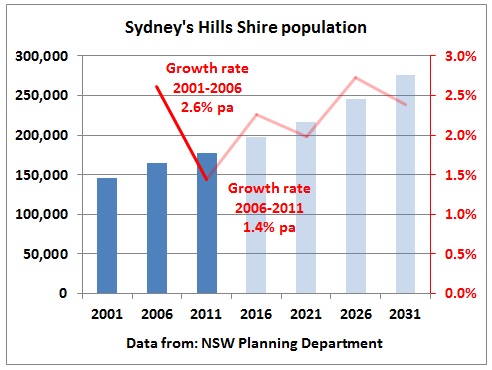 Data from: http://www.planning.nsw.gov.au/en-au/deliveringhomes/populationandhousingprojections.aspx
Data from: http://www.planning.nsw.gov.au/en-au/deliveringhomes/populationandhousingprojections.aspx
The periods of available population estimates do not allow to directly compare population growth and traffic growth but it seems annual traffic growth is less than population growth. Population growth is mainly driven by net overseas migration:  http://www.planning.nsw.gov.au/Portals/0/HousingDelivery/2013_Preliminary_NSW_Population_Projections.xls
http://www.planning.nsw.gov.au/Portals/0/HousingDelivery/2013_Preliminary_NSW_Population_Projections.xls
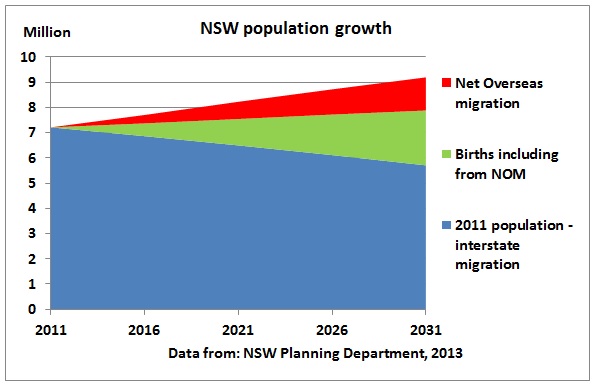 Note that births include those from previous NOM because of the younger age structure of the immigrant group. Without NOM, natural population growth would peak, as shown in this post:
Note that births include those from previous NOM because of the younger age structure of the immigrant group. Without NOM, natural population growth would peak, as shown in this post:
9/4/2010 Australian Population Scenarios in the context of oil decline and global warming http://crudeoilpeak.info/australian-population-scenarios-in-the-context-of-oil-decline-and-global-warming
So without net overseas migration traffic growth would be less and that motivates, for example, the Australian Business Group to call for:
13/1/2014
The Australian Industry Group wants the Government to increase the immigration intake from 190,000 this financial year to 220,000 in 2014-15, with a particular focus on skilled migrants.
http://www.abc.net.au/news/2014-01-13/business-group-calls-for-immigration-increase/5196766#comments
Given that fuel supplies are limited, NOM will contribute to increase competition at the petrol pump.
Fuel prices on 18 Dec 2013. Petrol and diesel could have been in the $2 range.
15/12/2013 Lucky country dodged $2 a litre bullet – for now
http://crudeoilpeak.info/lucky-country-dodged-2-a-litre-bullet-for-now
LPG increased by 1/3 recently. It’s not as abundant as you think http://crudeoilpeak.info/lpg
But it’s not only the high AU dollar, which protected Aussie motorists. It’s US shale oil – otherwise the world would be a in a deep oil crisis.
US incremental is crude oil production above the minimum for the period Jan 2001 and Sep 2013 (3,980 kb/d in Sep 2008). The growth in global crude production of the last 2 years came entirely from US shale oil while the rest of world was actually in decline, similar to the period 2005-2007, only starting from a slightly higher level. The ROW average line shows we are back to 2005 levels. So how long will the US shale oil boom last?
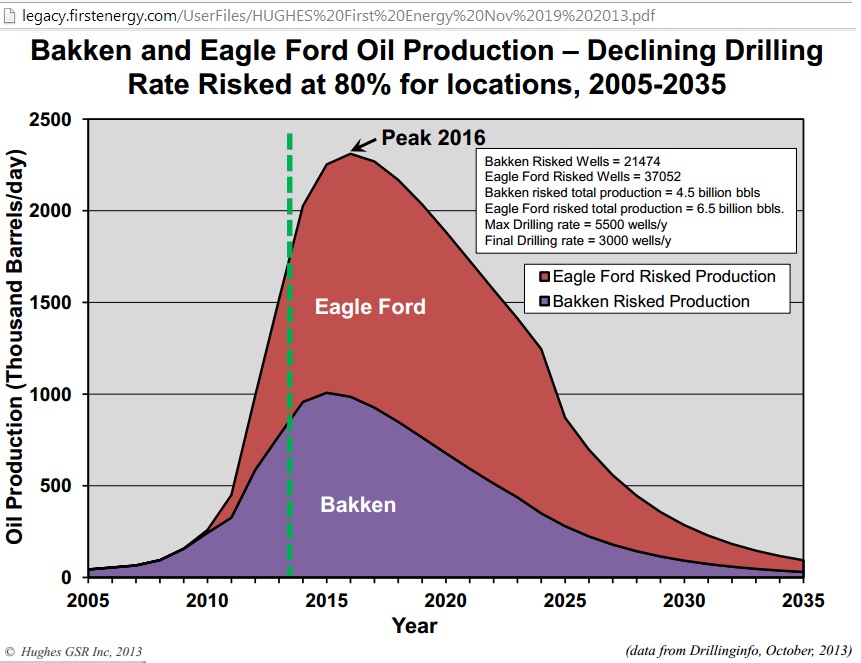 http://legacy.firstenergy.com/UserFiles/HUGHES%20First%20Energy%20Nov%2019%202013.pdf
http://legacy.firstenergy.com/UserFiles/HUGHES%20First%20Energy%20Nov%2019%202013.pdf
The shale oil boom will not last long – definitely not in terms of decades which is the timeframe for infrastructure like toll-ways.
Conclusion:
Transurban is extremely lucky that petrol prices did not go up to $2 a litre. Undeservedly lucky, because traffic analysts did not even bother to do any oil production calculations when planning was done for the widening project. But that luck won’t last long. There will be some surprises when US shale oil peaks. Population growth may not rescue toll-way operators.
Previous post (comparing revenue and CPI)
21/10/2013 Sydney motorists pay 22% more for motorway widening
http://crudeoilpeak.info/sydney-motorists-pay-22-more-tolls-for-motorway-widening
